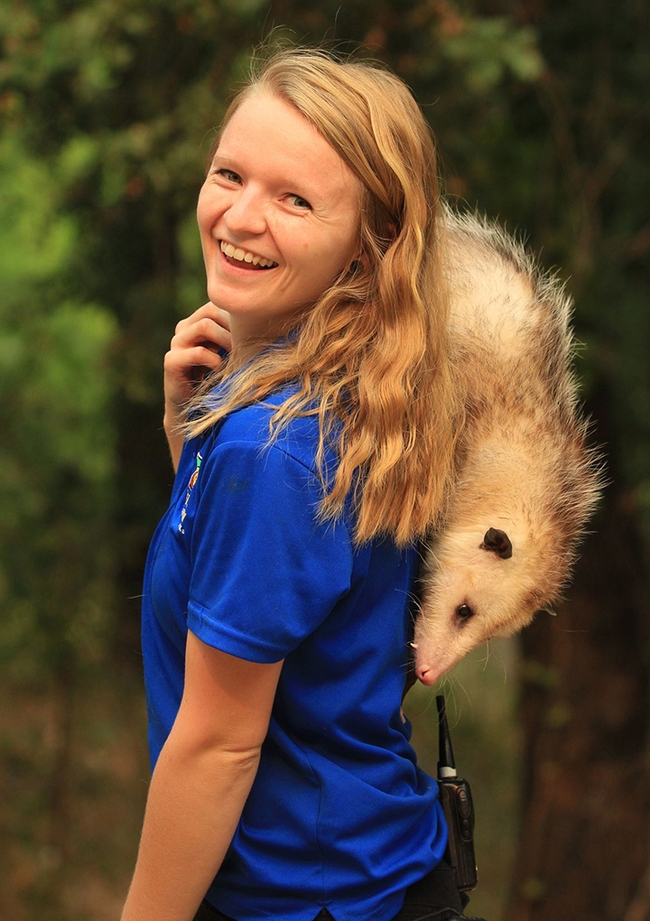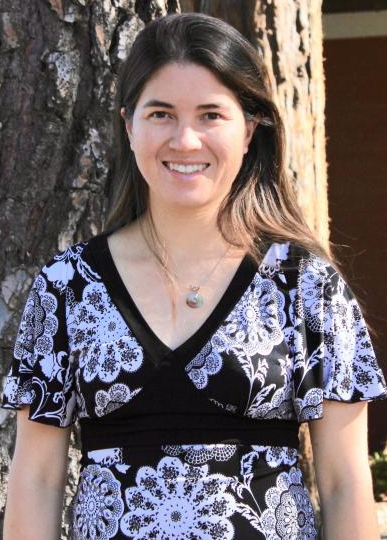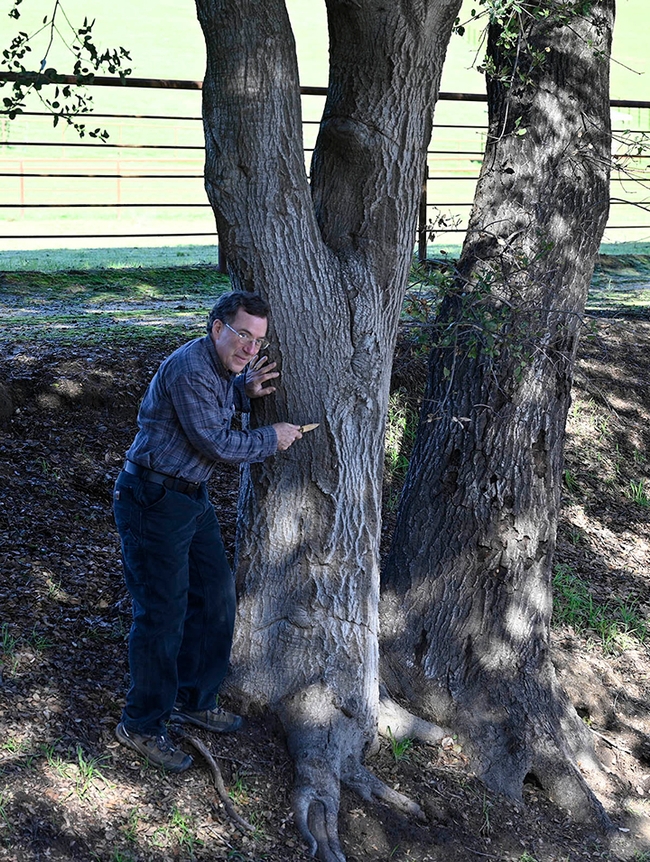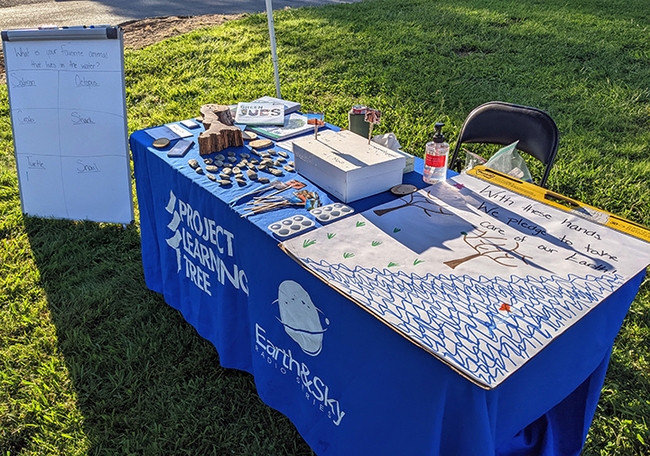
From boring beetles to burying beetles...and beetles from Belize and more...
And you're invited.
The Bohart Museum of Entomology is hosting an open house, themed "Beetles," from 1 to 4 p.m., Sunday, Jan. 24 in Room 1124 of the Academic Surge Building, 455 Crocker Lane, UC Davis campus. It's free and family friendly.
A Cal Fire display of bark beetle specimens; children's activities by Project Learning Tree California; and a UC Davis graduate student's display of tree cores and boring tools are among the new additions to the open house.
Also scheduled to participate is carabid beetle expert Kipling "Kip" Wills, associate professor with the UC Berkeley Department of Environmental Science, Policy and Management, announced Lynn Kimsey, director of the Bohart Museum and a UC Davis distinguished professor of entomology.
Cal Fire
Curtis Ewing, a senior environmental scientist with Cal Fire's Forest Entomology and Pathology, will show specimens of "many different invasive and native species that do or could impact forest health in California." They include such specimens as Ips engravers, Western pine beetles, flat-headed borers and various long-horned beetles. Among others on the list: coconut rhinoceros beetles, South American palm weevils, Asian longhorned beetles, emerald ash borers, gold spotted oak borers, Eucalyptus borers, invasive shot hole borers and Mediterranean oak borers.
"I will have a table with displays and a USB microscope hooked up to a screen and specimens," Ewing said, "so people can put different, small, species under the scope."
What should people know about bark beetles and the damage they cause?
"Native bark beetles, roundheaded borers and flatheaded borers are a natural part of our native forest ecosystems," Ewing said. "When our forests receive adequate amount of rain and do not suffer from extreme heat stress, these beetles thin the forest by attacking weakened and diseased trees. During times of high water stress, which is a combination of low rainfall, and often more importantly, high levels of heat stress, these native beetles can kill large forest areas. Trees in our cities and towns are threatened by a number of introduced beetles that attack and kill healthy trees. The beetles are able to attack trees that are otherwise healthy and happy, not suffering from drought or heat, because they lack an effective defense against these new alien."
Project Learning Tree California
Jonelle Mason, a UC Agriculture and Natural Resources (UC ANR) employee and coordinator of Project Learning Tree (PLT) California, an initiative of the Sustainable Forestry Initiative (partnered with the California Department of Forestry and Fire Protection-Urban and Community Forestry Program), will be tabling children's activities in the hallway of the Academic Surge Building. They will include a hands-on peppermint beetle activity.
"We specifically have an activity focused for K-5 called peppermint beetle!" Mason related. "It models how animals use a sense of smell to respond to the environment around them and identifying smells in our daily lives. "This is a super fun activity to present and then bring back to kids! It specifically will focus on bark beetles."
Mason, a master herpetologist and a former zookeeper with a bachelor's degree in biology, worked with exotic animals for 12 years before joining the PLT team to continue "my fierce love for nature and environmental education." As a zookeeper, she worked "with some of the largest animals on the planet" and "used animal training to influence thousands of people throughout the country."

UC Davis graduate student Jennifer Cribbs of the Graduate Program of Environmental Policy and Management, will display tree cores and boring tools. She focuses on restoration, botany and forest dynamics. Cribbs holds a bachelor's degree in psychology from Stanford University. Following her graduation, she worked for the National Park Service, the U.S. Forest Service, and the U.S. Geological Survey where her job duties ranged from tagging endangered sea turtles at Padre Island National Seashore to leading a field crew focused on assessing the health of white pines in Sequoia and Kings Canyon National Park.
Previously announced:
Burying Beetles
Tracie Hayes, a doctoral candidate and burying beetle researcher in the laboratory of Professor Louie Yang, UC Davis Department of Entomology and Nematology, will discuss her work and present a video she created, "A Clearance of Death on Behalf of Life" at https://youtu.be/cGLOE7SrbiU. She will field questions about the insect and her research. (See news story)
Beetles from Belize
Folsom Lake College professor Fran Keller, a Bohart Museum scientist and a UC Davis doctoral alumna of entomology, will discuss the beetles that she and other scientists collected in Belize. (See Bug Squad blog)
Arts and Crafts
The family arts-and-craft activity will be to color a drawing of a carrion beetle, the work of Tracie Hayes.
The Bohart Museum, dedicated to "understanding, documenting and communicating terrestrial arthropod diversity," was founded in 1946 and named for UC Davis professor and noted entomologist Richard Bohart. In addition to its global collection of eight million insect specimens, it houses a live "petting zoo," featuring Madagascar hissing cockroaches, walking sticks and tarantulas; and a year-around gift shop, stocked with insect-themed books, posters, jewelry, t-shirts, hoodies and more.
Attached Images:

